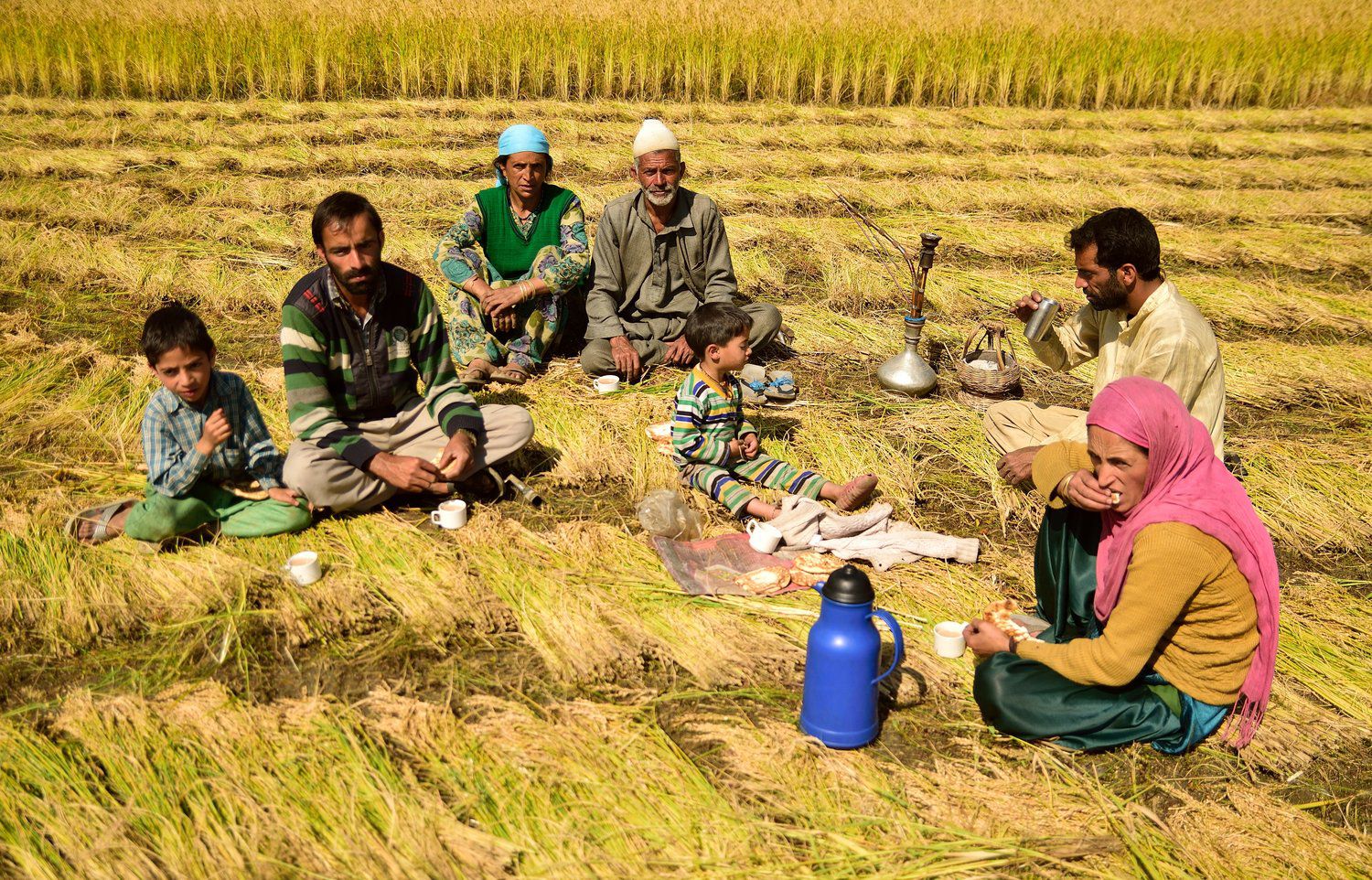Chai over the world.
For the Germans it might be the beer. For the Irish it is the whiskey. But Kashmiris are known to be heavy drinkers of tea.
Kashmiris are known to be tea connoisseurs. One thing every Kashmiri shares, is their love for the tea. This love has traveled across the world, along with the migrations throughout the country’s tumultuous history for hundreds of years.
From the occasions of happiness, weddings and congregations. Or funerals, tea is to be served. Tea is one of the rare things, that keeps Kashmiris social.
There are many forms of tea in Kashmir, mostly variants of Kahva and Nun chai. Despite the fact that English tea has been in the country for many years, it still is called as Lipton tea.

(Alana Hunt)
It could have been the Lipton brand of tea that the English travelers carried, while traveling in the valley.
Drinking Nun chai, in the world of Starbucks coffee and Lipton tea, tastes like resistance against colonialism and capitalism. Here’s a political essay on how the colonists destroyed the perfect cup of tea.
It’s supposed to be bitter. Bitter as the heart of a star-crossed lover, like poison. Drinking Nun chai is not for the faint-hearted. That’s why, it’s the national drink of Kashmiris.
Nun chai is believed to indigenous to Kashmir. It’s known by many names of its many variants, Sheer chai, Namkeen chai, Nun chai, Pink tea and of course, the Kashmiri tea.
Origin
Tea does not grow in Kashmir. And Chinese being the exponents of tea, would export it across the Central Asian region. Kashmir, on the crossroads of Central Asia and South Asia, was an important trade center. Many foreign travelers such as the Austrian army officer, Charles von Hügel mention Nun chai in their travelogues.
It’s widely believed that Nun chai came to Kashmir from Yarkand, in Turkestan. Incidentally, Kashmir’s first Muslim Sultan Saddruddin Shah (Rinchana) embraced Islam at the hands of Bulbul Shah (Sayed Sharafuddin Shah) who was from Kashgar in Turkestan.
In Turkestan, Atkan chai is made with salt, milk and butter, quite similar to one made in Ladakh region, called the Gur-Gur chai. Like Nun chai, the origins of Kahva are also unclear. According to the Global tea history, it may also have its origins in the Turkic region of Turkestan, dating back to the first and second century of the Kushan Empire, in Yarkand.
Just a fact, the ancient tea from the Yarkand region and in southern China region is believed to have been served with ox blood.
In literature

Mullah Hamidullah Shahabadi (a Persian poet from Kashmir), while imitating Zahur’s Saqinama wrote a humorous poem called, the Chanama.
Give me tea, O Saqi, and let there be no delay;
let me have it bitter, if milk and sugar are not at hand
Had Jamshed taken a whiff from this pot,
his slow-beating pulse would have run like deer.
Have you heard the boiling kettle of tea cry bagg-bagg?
Verily you would say it was Mansur shouting ana al-haqq.
There is a reference in the Book of God
Bread to eat and tea to drink.
When Kashmiri Muslims migrated in droves to Punjab in mid-18th century, they took Nun chai with them. But the chai that Kashmiri emigre and their generations in Pakistan drink, is sweetened. And is called Sheer chai.
Another similar tea to Nun chai is the Qaymak chai, served in Afghanistan. It’s also the sweetened version of the Nun chai.
Recipe
Green tea leaves are brewed in sodium bi-carbonate (phel) until a thick red-brown color extract is obtained which is called ‘tyoth’. This tyoth is then diluted with water and then salt and milk are added.
It’s typically served with Kashmiri bagel, Czochwor with sot or with Czot. The traditional bakery is quite similar to that found in Central Asian region, especially Samarkand.
There’s no better recipe to prepare Nun chai than this by Aliya Nazki on her food blog, the Dankuthh.
Nun chai-mania
The mania behind Nun chai is such that researchers believe that, it is responsible for the rise of gastric cancer.
Scientists can wait, for Kashmiris cannot survive without Nun chai. It’s the closest thing to an anti-depressant. It’s drunk every single day, at least three times.
In the farms and orchards across Kashmir, Nun chai is carried in the exquisite Samovars to the people working on the field.
The ultimate tea break.

(Alana Hunt)
It used to be drunk in traditional cups called, ‘Khos’ with piping hot Samovar. But now thermos and mugs have replaced it. That just means that Kashmiris drink Nun chai in their coffee mugs.
In 2010, Australian writer, Alana Hunt started her ‘Cups of Nun Chai‘ blog on her stay in Srinagar during the curfew.
If you’re in Kashmir, you must have the piping hot Nun chai.
As the Kashmiri saying goes, it does not matter whether the tea is less or more, but it must be hot.
https://twitter.com/_Faysal/status/968460083846959104

